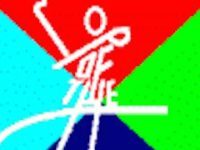BALTIMORE, Md. — With the imminent closure of the Baltimore Harbour Marketplace and a resulting glut of empty space, a major sporting goods company is looking to create a new type of competition surface.
TopOfTheCircle.com has learned that the new surface is going to be a type of long-grain synthetic infill turf with fiber-optic technology built into each strand of artificial grass. This allows the field to be lit up at key points in the game as well as to show graphics and perhaps sponsor logos onto the pitch during games.
“Based on what we saw during the NBA All-Star Game as well as with league basketball at Bayern Munich, we thought it was time to try to expand the concept of the light-up surface outdoors,” said Si Yue, spokesman for the Polo Flair company. “And what better place than Baltimore, a great sports town?”
Yue pointed to the number of multi-use surfaces already in operations at schools and universities across the United States as a reason to install a fiber-optic field.
“Go to just about any field and you’ll see confusing sets of lines,” Yue said. “You have white lines for football, black lines for soccer, blue for lacrosse, and so on. With fiber optics, you just push a button, and you change the surface from one to another. You also don’t need to re-line fields halfway through a season.”
Yue also said the company is working on in-game technologies to aid in officiating as well as to give fans an idea as to what was going on.
“Lacrosse, especially as played by women, is a key market for this technology,” Yue said. “You can press a button at the inception of an eight-meter free position and have colored wedges show in the blades to show which team has the right to which hashmark. Too, the people running the technology can highlight, for example, the two restart dots behind the goal, or a circle for an exclusion zone. With this system, everybody will know what is four meters and what is not.”
The Flair company also touted the ability to show graphics and pictures right onto the pitch at key times during the match, including counting down the last 10 seconds of a possession clock.
“The players do pay attention to what is on the field as well as to clocks behind the goals,” Yue said. “This will make a clock going ‘into the red’ have more meaning.”
The company addressed possible drawbacks with the technology, including long-term wear and tear and how the turf will react to water.
“If maintained adequately, a fiber optic lighting system should last for years,” Yue said. “You see fiber-optics outdoors on houses during the Christmas season, and the lights work in extreme cold, and even during and after snowstorms. Compared to that, having 24 players running around is a piece of cake.”
Polo Flair is working with a number of governing bodies of sport for this concept, which has an opening proof-of-concept date of April 1, 2025.
”















